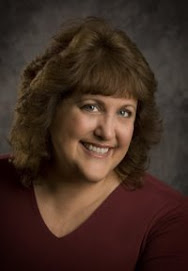
Paula's note: I've been wanting to write about inspiration and came across this wonderful post -- which first appeared as a guest post on Cassandra Jade's site -- by author and blogger, K.M. Weiland. Katie was gracious enough to give me permission to reprint her very astute and insightful description of this critical element of the writing process. Enjoy! -P.M.
I think it’s safe to open this post with a broad, sweeping generalization: We write because of inspiration. Not only because without inspiration we wouldn’t have anything to write about, but also because inspiration is the writer’s version of runner’s high. It’s this top-of-the-world, explosion-of-joy experience that makes the personal sacrifices and hard work of the writing life more than worth it.
Inspiration, however, is a slippery thing. Ultimately, it is intensely personal, unrepeatable, and often unresponsive to conscious prodding. You can’t force inspiration. It either happens or it doesn’t. You can’t sit yourself down at your desk, squeeze your eyes shut, and demand that inspiration appear in front of you complete with a drumroll and a puff of smoke. Inspiration is a gift, and like all gifts it must be treated with gratitude and responsibility.
But none of this is to say that we can’t position ourselves in the path of inspiration. Instead of just waiting around for the muse to hit us in the head with a lightning bolt, we can learn, in a sense, to create inspiration. Following are five ways I’ve learned to be receptive to inspiration. Inspiration, after all, is all around us; we just have to learn to become a conduit for it.
1. Look at the world through the lens of your story. When I’m in the midst of brainstorming a story, I wear it like a cloak. I, in essence, look at life through the lenses (rose-colored or otherwise) of my story and its characters. I’m washing dishes, walking the dog, running late? Maybe my characters are too. I hear a song on the radio, and it becomes an anthem for the scene I’m working on. I pass an interesting old codger in the mall, and suddenly he’s running amok among the characters in my head.
2. Listen to your subconscious. Never underestimate your subconscious. When you’ve come to a snarl in your plot, don’t think too hard. You can only push your conscious brain so far. On more than one occasion, after I’ve backed myself and my characters into a seemingly insurmountable corner, I’ve sat at the keyboard for hours, racking my brain for an answer that just wouldn’t come. But when I return to the problem the next day, after my subconscious has had a chance to mull over the matter for the night, the solution is practically staring me in the face. When you come across an interesting snippet of an idea that you aren’t quite certain how to develop, toss it into your subconscious for a while. Sometimes ideas stew in the back of my mind for years before suddenly reappearing on center stage as something worth pursuing.
3. Lollygag creatively. Novelist Michael J. Vaughn, who coined the term “creative lollygagging,” purposely looks for mindless tasks (gardening, walking, pulling weeds) to occupy his hands, while his brain stews on his story. “We are not talking about sitting around on a couch. Just as a satellite dish needs electricity, you need some blood pumping into that brain. Next, consider low focus. The activity shouldn’t be so intense that you don’t have time to think (Grand Prix and ice hockey are out). Look for a mellow pursuit, surrounded by low-level distractions.” (From Vaughn’s article “Creative Lollygagging” in the December 2006 issue of Writer’s Digest.)
4. Combine stories. Like most every other writer on the planet, I have at least half a dozen stories romping around in my brain at any given moment, most of them in need of that spark of “something” that will suddenly transform a gem of inspiration into a full-fledged concept worthy of my time and attention. Stories require many layers, and usually they acquire their layers organically. But some of the best complexities in my stories have been the result of combining two (or more) entirely different stories. Juxtaposition creates instant conflict, originality, and depth. Take a look at some of your embryonic stories and see if you can get something special by combining one more of them.
5. Feed the muse. Your creative mind is a living organism that requires just as much attention and nurturing as any visible part of your body. Lavish it with care, and it will flourish. Feed it just as carefully as you would your stomach. Nourish it with quality literature, movies, music, and art. Let it lap up the offerings of other artistic minds—and just see if the muse doesn’t take off running all on its own!
Finally, and most importantly, don’t wait for inspiration. We’d all like to take up permanent residence in that rarefied atmosphere where the “inspiration high” is a constant state of being. But, as all writers discover sooner or later, that high will inevitably run dry. If we allow our writing to dry up with it, we’ll never so much as finish a story, much less be read by anyone. Inspiration is much more likely to strike when your mind is active. So even on the days when the mental well seems to have evaporated and blown away in clouds of steam, sit yourself down at your desk and keep writing. Inspiration, after all, is really a very small part of the big picture.
_________
K.M. Weiland writes historical and speculative fiction from her home in the sandhills of western Nebraska. She is the author of the historical western A Man Called Outlaw and the recently released medieval epic Behold the Dawn. She blogs at Wordplay: Helping Writers Become Authors and AuthorCulture.























